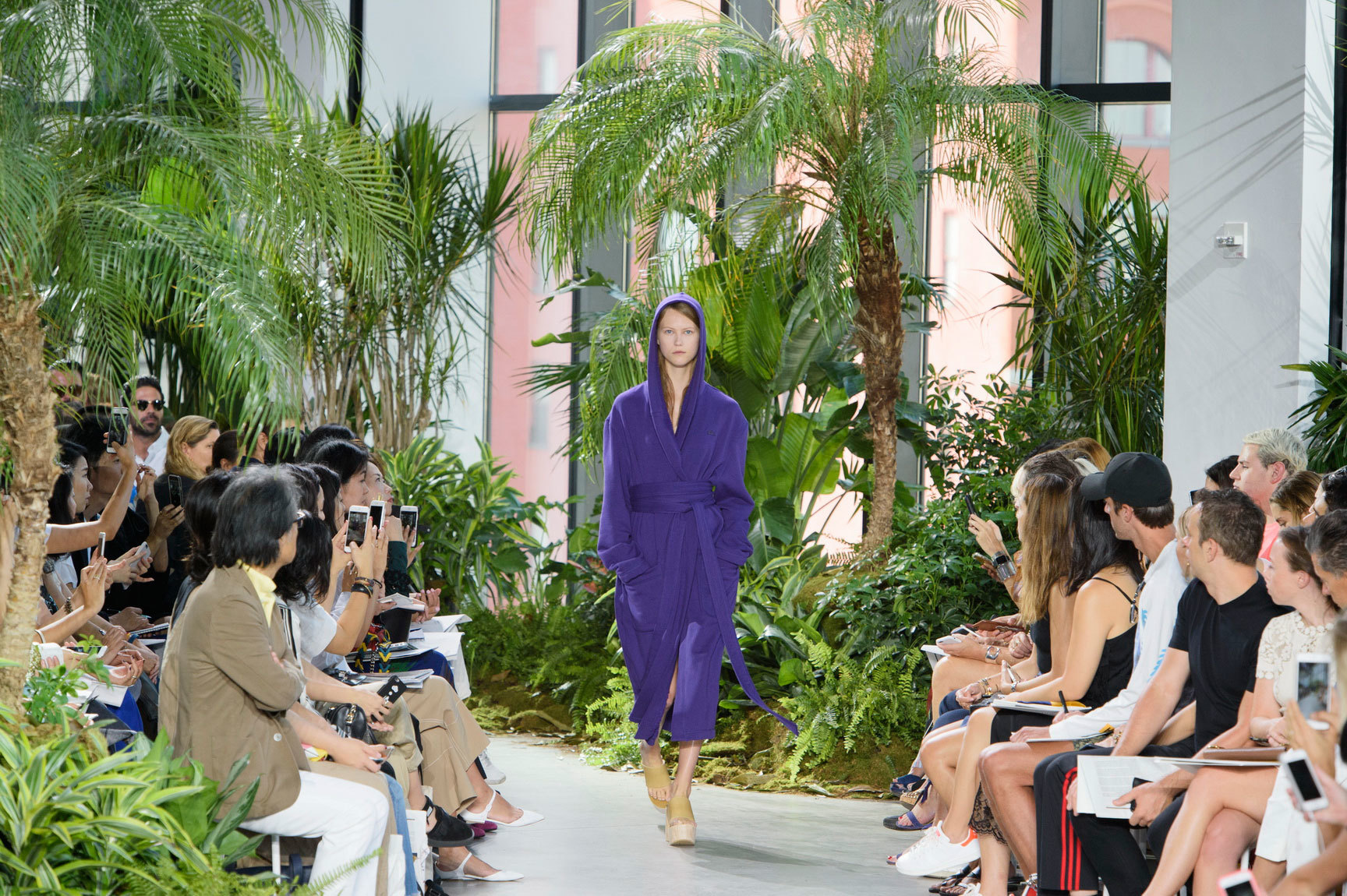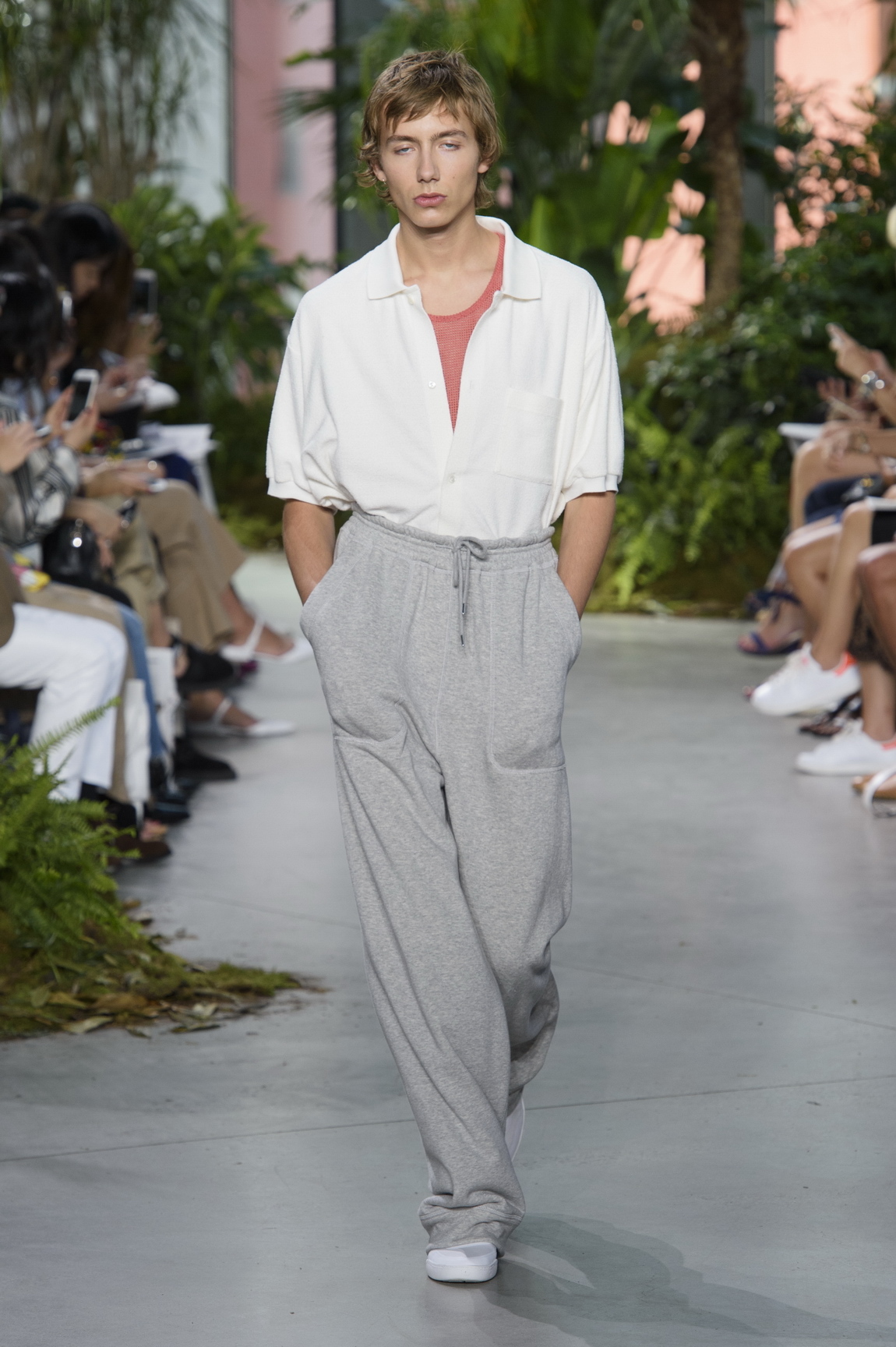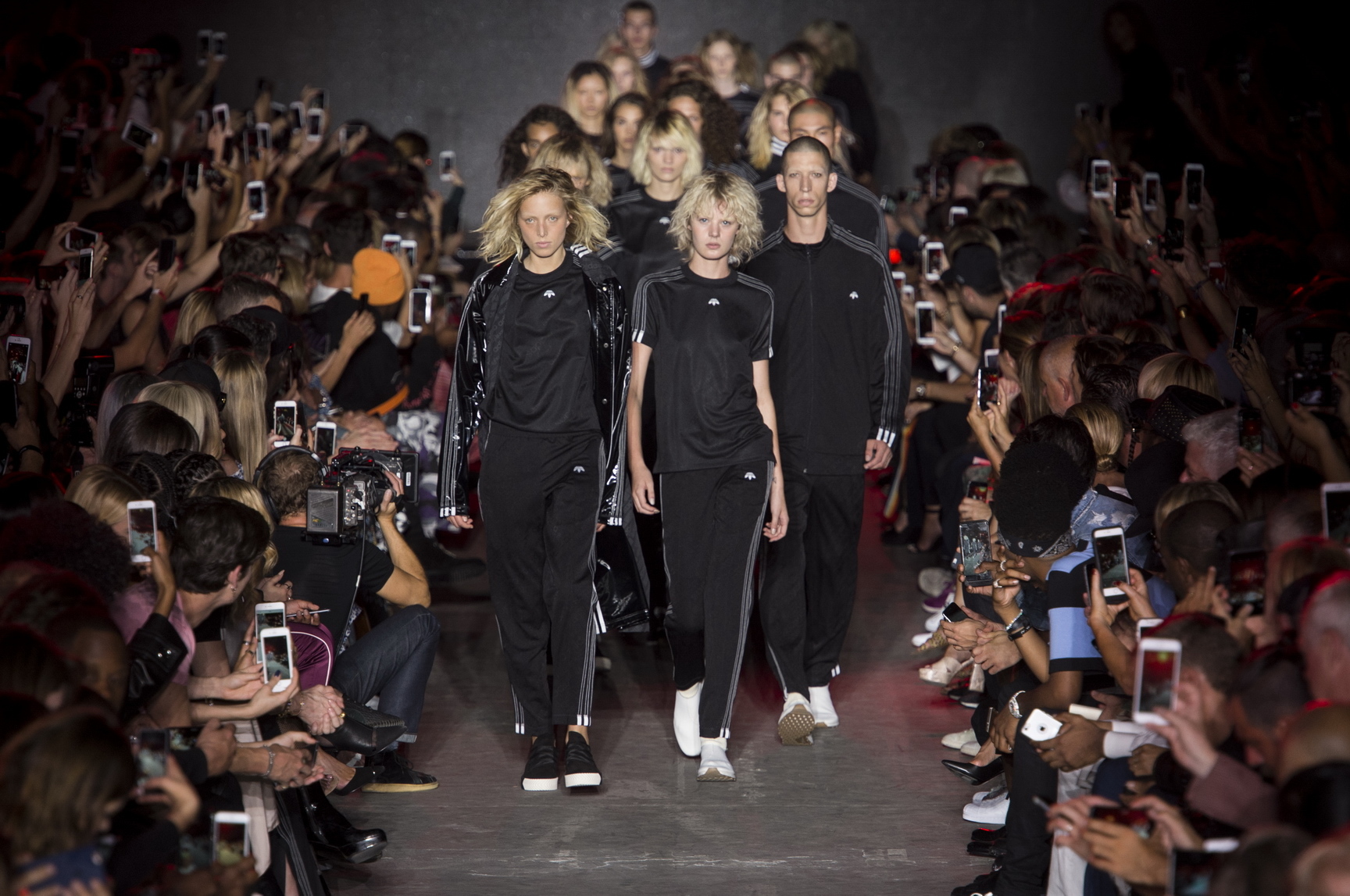Today marks the fifteenth anniversary of 9/11. Back then, the shows in New York were in full swing as they are now, and while the surrounding world is hardly a safer place in this day and age fashion has far from lost its humanitarian spark. “Felipe Oliveira Baptista has found the most gentle response to the aggressiveness of our times,” the Lacoste show notes opened, explaining the designer’s escapist idea of a “tennis match on the rooftop of Villa Malaparte.” These were tactile clothes: friendly garments from the lounge and beachwear wardrobes such as robes and sweats and pajama shirts. “I started working on the collection a month after the attacks in Paris, and I wanted something that felt reassuring,” Baptista said after the show. “I’m not here to make political statements, but it was what I wanted: the idea of going back to an endless holiday and feeling carefree — no worries or aggression. It was very peaceful. I wanted the clothes to feel frank. You just want to wrap yourself in them.”
Over the past fifteen years, fashion’s reactions to the terrors of the world have often been of a pacifist nature. Around the backstage landscape, designers will tell you their shows aim to “bring a speck of light into dark times” or provide “a message of love and freedom”. It was part of Baptista’s message at Lacoste, but there was also a relatable honesty to his idea of simply wanting to hide from it all. It isn’t a solution but the consolation fashion often offers. “This summer went to show even more how we need that,” he said, referring to the countless attacks in Europe, which are changing the political outlook of a continent that once prided itself on socialism, especially during America’s George W. Bush years under which 9/11 happened. This summer, following the terror attack in Nice, some mayors in the South of France banned so-called burkinis from their beaches, arguing the Muslim bathing suits were a reflection of Islamism. “It’s nonsense,” Baptista said. “I put the same clothes on a man and a woman — everyone should be allowed to wear whatever they want.”




If anyone’s a poster girl for that philosophy it’s Madonna, who attended the Alexander Wang show with her daughter Lola Leon. She was returning the favor following Wang’s appearance in her “Bitch I’m Madonna” video, in an otherwise rare fashion show appearance for the world’s most famous person, who used to attend Jean Paul Gaultier’s presentations in the early 90s. If it weren’t for the two of them and the way they normalized the big conversation on sex and gender 25 years ago, Wang’s sexed-up show of underwear as outerwear and fetishized beachwear this season could never have happened. And while his message had little to do with politics, Wang’s show — which also debuted his new Adidas collaboration — was easily a product of a post-9/11 world, where Bush’s right-wing reign — now positively liberal compared to what Donald Trump has in mind for us — sparked a political division in the West now more defined than ever.



It might sometimes seem sentimental or forced to talk about these things in relation to fashion, where the customer is hardly buying into a political statement when she splashes out on a knitted Lacoste robe or a silky Alexander Wang short-short, but the activist power of this multi-billion-dollar industry can’t be underestimated. “We should try anyway,” Baptista said. “Fashion is made up of a lot of outcasts and people who are different, and little by little a lot of barriers have been broken through clothing.”
Credits
Text Anders Christian Madsen
